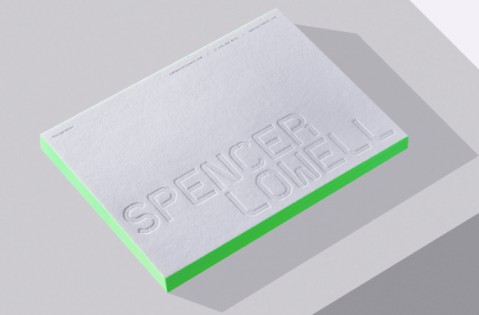5 KEY TIPS FOR CREATING GREAT BROCHURE CONTENT

Creating an impactful brochure isn’t just about eye-catching designs; the content plays a crucial role in capturing your audience’s attention. Whether you’re promoting a new product, detailing your services, or sharing important information, your brochure needs to communicate effectively and leave a lasting impression. Here are five key tips to help you craft compelling brochure content that resonates with your readers.
1. FOCUS ON THE READER
When creating your brochure, think about what your customer or audience will get out of it. Your content should highlight the benefits for them. Most people won’t read every word of a brochure; they’ll just skim to find the key points. So, make it easy for them to find the important information quickly.
Use images or diagrams to convey information fast. Charts and graphs can simplify complex details or show comparisons. Write in a way your audience will understand—avoid industry-specific jargon.
Include a Common Questions or FAQ section to address typical inquiries. Adding testimonials is also a great idea because people often read them. Remember, your audience wants to know how they will benefit from your product or service, so make sure to tell them clearly.
2. PLAN OUT YOUR TEXT, PHOTOS & ARTWORK
The words and design elements in your brochure are crucial for delivering your message effectively, so it’s important to use them wisely. Here are some simple tips:
Keep It Simple: Less is often more when it comes to brochures. Avoid cramming in too much information, as it can overwhelm readers and bury the key points.
Consistent Fonts: Stick to one or two easy-to-read fonts and avoid mixing too many styles. Don’t overuse bold or underline within the text blocks.
Use Bullet Points: Bullet points and numbered lists make your content more reader-friendly and easier to navigate.
Choose Large Photos: Instead of many small photos, use one or two large, high-quality images per page. Photos showing people or activities are more engaging than static objects or buildings.
Add Captions: Captions on photos are highly read, so include descriptive captions to provide more context.
Consistent Colors: Ensure the colors and design are consistent throughout the brochure and complement the subject matter. Use full color for photographs to capture and maintain attention.
Following these tips will help you create a clean, visually appealing brochure that effectively communicates your message.
3. USE AN ATTENTION GETTING COVER
The cover of your brochure sets the tone for the entire piece, making it crucial to design it well. Since it’s often the first impression of your organization, you want it to be compelling.
Instead of simply placing your organization’s name or product on the cover, consider highlighting a strong benefit or asking a question to engage the reader. For example, use a headline like “Are You Overpaying for Life Insurance?” or “The Eight Ways Your Home Leaks Energy” instead of “Springfield Insurance Company” or “Home Insulation.” This approach focuses on the reader’s perspective and piques their curiosity.
If your organization has a recognizable logo, include it on the cover but give it less prominence than your headline. Additionally, a single, colorful image that captures the subject of the brochure is essential for sparking interest.
4. INCLUDE A SIMPLE CALL TO ACTION
The call to action (CTA) tells your customer or reader what to do next after they’ve read your brochure. Keep it simple and easy to follow. Here are some examples:
- Informational Brochure: “Keep This Brochure Handy for Future Reference.”
- Appointment Setting: “Call Today to Schedule a Free Consultation.”
- Website Visit: “Visit WidgetsAndMore.net for our Monthly Special.”
- In-Store Visit: “New Shipments Arrive Weekly—Hurry in for the Best Selection.”
Make sure your CTA is clear and straightforward to encourage your audience to take the next step.
5. PROVIDE CLEAR CONTACT INFORMATION
To make your call to action (CTA) effective, ensure your complete contact information is easy to find in the brochure. The best spot for this is right near your CTA and on the back cover, where most people look when they want to contact you.
Include as much contact information as possible to give customers options for their preferred method of contact, such as local and toll-free phone numbers, email, website, physical address, and more. Adding details like daily hours, directions, and maps can also help customers find or reach you easily.
Your brochure should present your organization in the best possible light, using the highest quality artwork and paper you can afford. Since there are many design and printing options, involve your printer early in the process. This will help you make informed choices, saving you time, money, and potential regrets later on.
Reach out to us today to start designing a stunning brochure that perfectly showcases your business. Our team is ready to bring your vision to life!
[Bulk Printing, Offset Printing, Commercial Printing, Printing Partner, Printing Service Provider, Printing Solutions, Printers For Corporates, Professional Printing, One Step Print LLP, Offset printer for bulk Printing, Printer Nearby, Brochure Design Tips, Effective Brochure Content, Brochure Layout Ideas, Engaging Brochure Covers, Call to Action for Brochures, Brochure Contact Information, Brochure Design Best Practices, Creating Compelling Brochures, Brochure Design Essentials, Brochure Design and Printing, Professional Brochure Design, Brochure Design Strategies, Brochure Content Tips, Brochure Design for Businesses, How to Design an Effective Brochure]








